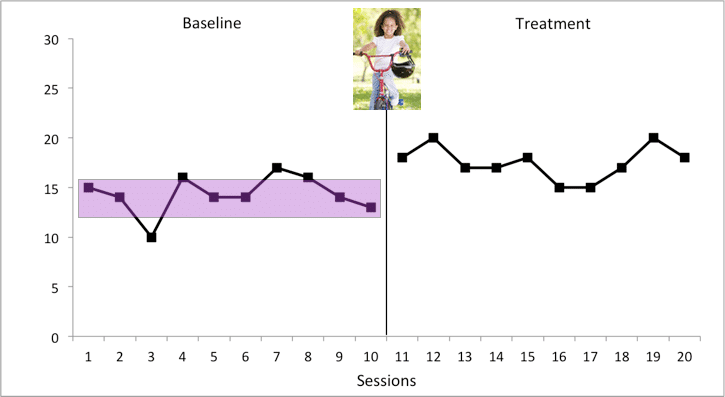Lesson 2: Level Change
31 Topics
Lesson 3: Slope Change
45 Topics
Lesson 4: Putting It All Together
26 Topics
Mastering the Basics of Visual Analysis by Katie Wolfe and Timothy A. Slocum is © 2015-2024 FoxyLearning LLC and distributed under CC BY-NC-SA




; 2.19 Detecting a Change in Level with Variability
Just as when you were estimating the level of one phase, variability makes it a little more difficult to compare two phases. And, just like when you were looking at one phase with more variability, it can be helpful to imagine a band that covers most of the data points within each phase. Look at this graph. Let’s say that it depicts the number of minutes a girl rides her bike every day. In baseline, most of the data points are around 15, even though the highest is around 17 and the lowest is around 10.
Post a comment
This section is for the civil and public discussion of the content of this page. We reserve the right to moderate and remove comments that are irrelevant, disrespectful, hateful, harassing, threatening, or spamlike. If you are experiencing a technical issue, please contact our helpdesk for assistance.
